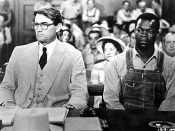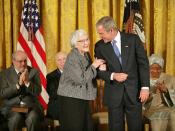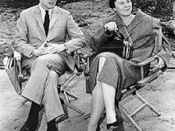When searching for optimism or pessimism in a novel, one of the first things taken into account is the title. "To Kill a Mockingbird" by Harper Lee, is one of those books where the title gives nothing away, and is not understood until you have read the story. This book, first published in 1960, is in fact neither an optimistic, nor pessimistic novel. However, it shows detailed examples of each, shown in different parts of the storyline.
One of the first optimistic points that can be found in this novel is found in Scout and Jem's father, Atticus Finch. There are many times throughout the novel in which Atticus represents the good in the American society at the time the book was published. Mr Finch was not a racist man. He held equal views of both races, which is why he had no problem with accepting the Tom Robinson case.
The moral and ethical lessons taught to Scout and Jem by Atticus throughout the novel, were not meant to only assist in telling the story, but to help teach those reading the novel valuable lessons in life about equality and people's rights. One of the most important lessons taught by Atticus, was to "shoot all the bluejays you want, if you can hit 'em, but remember it's a sin to kill a mockingbird." This is a valuable lesson for people of all ages to learn, and is conveyed in many contexts throughout the book. Harper Lee expressed optimism in this quote, as she believed that she could teach the people some good, and that they might learn from her novel. Through Atticus, Harper Lee showed the good in the world, and the good that the world could achieve.
Another optimistic point found in the novel, is when the...


